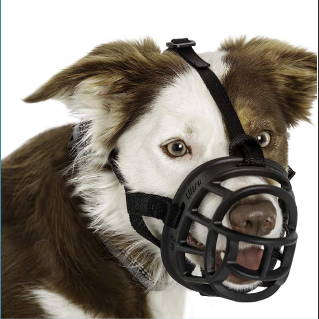
Muzzles are an important tool to prevent dog bites. Training your dog to wear a muzzle can increase their safety, as well as the safety of the humans and animals around them. Read more to learn how to muzzle train your dog in a low-stress and fun way!
Why train your dog to wear a muzzle?
- All dogs have the potential to bite, no matter how friendly they are. As such, all dogs should be acclimated to wearing a muzzle in case they need to wear one during veterinary procedures, grooming, or social interactions.
- Wearing a muzzle should not be a punishment for your dog (or for you!) it should be viewed as a tool that helps dogs interact with their environment safely.
- Creating a positive association with the muzzle can make wearing it fun for your dog.
- Decreasing the risk of a bite can make people around your dog feel more relaxed, which will reduce your dog’s stress levels and ensure a positive experience for all.
Supplies needed
- A well-fitting muzzle: “Basket” style muzzles are recommended as they allow dogs to eat, drink, and pant while wearing
- Positive reinforcers: Positive reinforcement helps dogs learn by providing a reward when they perform a desired behaviour. Positive reinforcers can vary between dogs, but may include food rewards, verbal praise, and play. try a few to see which your dog best responds to.
- Time: set aside regular training periods, no more than 5 minutes at the beginning, to work on muzzle training. The environment should be quiet and comfortable for your dog.
- Your dog should not show signs of fear, anxiety, or stress during training sessions. If present, take a break and revisit the training session later.
How to get started
- Start with 1-2 minute sessions and lots of positive reinforcement
- Hold a treat in the muzzle to encourage your dog to put their nose inside
- You may choose to add a cue word to this action such as “muzzle”
- Use positive reinforcement to teach your dog that “nose in muzzle = treat”
- Once your dog comfortably puts their nose in the muzzle, you may fasten the muzzle and continue rewarding before taking it off after a few seconds
- Gradually extend the time or change the location of your training sessions as your dog becomes more comfortable
- These steps should be completed over several training sessions. Remember to take breaks to avoid overstimulation and/or frustration or you and your dog.
Additional reosurces:
For more information, visit: https://muzzleupproject.com
Muzzle Training Infographic PDF
